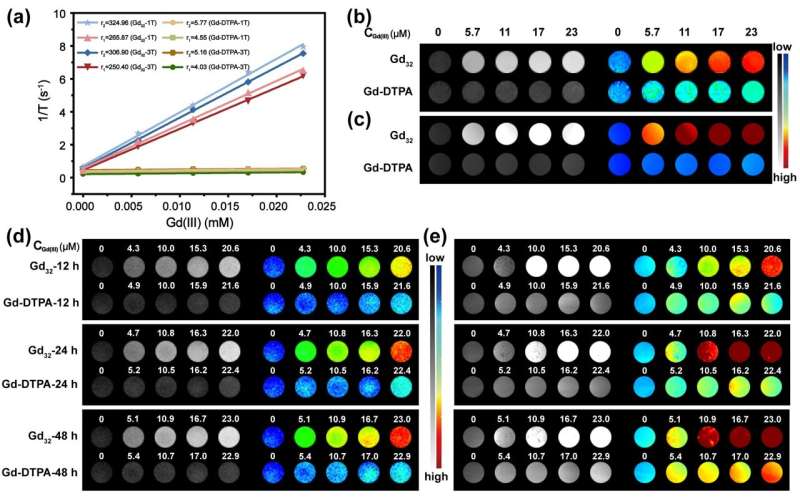Assembly of stable spherical lanthanide cluster aggregate for magnetic resonance imaging

This study was carried out under the leadership of Dr. Ming-Liang Tong (Key Laboratory of Bioinorganic and Synthetic Chemistry of Ministry of Education, School of Chemistry, Sun Yat-Sen University) and Dr. Shiping Yang (College of Chemistry and Materials Science, Shanghai Normal University).
Hai-Ling Wang from Sun Yat-Sen University was responsible for the synthesis of highly stable spherical clusters (Ho32 and Gd32), analysis of high-resolution electrospray mass spectrometry (HRESI-MS), analysis of solution behavior and assembly mechanism.
Donglin Liu from Shanghai Normal University conducted in vivo and in vitro toxicity and magnetic resonance imaging tests and analyzes on Gd32. Due to the highly exposed metal centers, high-nuclear lanthanide clusters are usually easily attacked by solvent molecules in solution and lose their stability, which limits their application in solution.
Based on the ligand-protected metal cluster core strategy, the research team designed and synthesized spherical high-nuclear lanthanide clusters with high stability and excellent solubility in organic solvents or aqueous solutions. These properties are particularly striking in the reported examples of lanthanide clusters. A large number of organic ligands in the periphery tightly wrap the cluster core to ensure the stability of the spherical cluster in solution.
At present, the MRI contrast agents used clinically are mainly mononuclear gadolinium chelates, which show unsatisfactory imaging contrast due to their low Gd content. According to the SBM theory, increasing the content of Gd in the molecule can effectively increase the relaxation rate of CAs.
The nanocluster Gd32 with highly aggregated Gd in the molecule has a T1 relaxation rate as high as 265.87 mM−1·s−1 at a magnetic field strength of 1 T, which is much higher than that of CA Gd-DTPA (4.55 mM−1·s−1, 1 T) currently used clinically. This surprising discovery prompted the research team to further explore the toxicity of Gd32 in vitro and in vivo, and these results indicated that Gd32 has great potential as a new type of CAs.
Next, the research team made an in-depth comparison of the MRI imaging effects of Gd32 and Gd-DTPA in aqueous solution, in cells, and in mice with 4T1 tumor models. There is no doubt that Gd32 is superior to Gd-DTPA.
These experimental results demonstrate the feasibility of ligand-protected metal cluster core strategy to construct highly stable lanthanide clusters, and provide a new way to construct low-dose novel Gd-based MRI contrast agents.
The research is published in the journal National Science Review.
More information:
Hai-Ling Wang et al, High-Stability Spherical Lanthanide Nanoclusters for Magnetic Resonance Imaging, National Science Review (2023). DOI: 10.1093/nsr/nwad036
Citation:
Assembly of stable spherical lanthanide cluster aggregate for magnetic resonance imaging (2023, April 26)
retrieved 26 April 2023
from https://phys.org/news/2023-04-stable-spherical-lanthanide-cluster-aggregate.html
This document is subject to copyright. Apart from any fair dealing for the purpose of private study or research, no
part may be reproduced without the written permission. The content is provided for information purposes only.
For all the latest Science News Click Here
For the latest news and updates, follow us on Google News.

